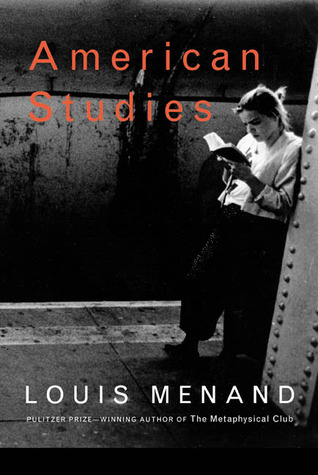With a collection of essays, you can always tackle one piece in a hurry—say before bed or waiting for a train—without leaving a vaguely remembered thought to be picked up in the future. But upon completion you sometimes wonder if the parts have added up to anything greater. The essays in American Studies, Louis Menand’s latest offering, were written years apart from one another and published in various magazines and reviews, often in a slightly different form. Yet the essays, taken together, make a convincing and unified whole.
Menand’s topics stretch chronologically from William James in the 19th century to Maya Lin in the present day. In between are Oliver Wendell Holmes, Richard Wright, the magazine Rolling Stone, Larry Flynt, and Al Gore, among others. Though Menand includes some obvious pairings (Holmes created the modern haven for free speech and Flynt is one of its most controversial practitioners), this diverse group ranges across a large set of disciplines. Menand, who is trained in literature, has not made himself an expert in all of the fields in which his subjects are famous. He does not focus on gritty particulars. Instead he looks at the way in which each subject—be it broadcasting, poetry, or porn—both influences, and is in turn influenced by, the public. As Menand writes in the preface, “It’s true that things aren’t always what they seem, but what they seem is always part of what they are.”
Menand argues that things have been perceived in different ways at different times. What we think is the most troubling racism found in Wright’s Native Son was, in its time, thought to be so benign that it could have been taken from a newspaper. Television networks, which seem to us to have endangered American culture, were originally thought to be responsible for educating and bettering the next generation. At his best, Menand manages to arrange all of the contradictions in such a way as to clarify our vision of his subjects.
Consider Menand’s article on the influence of Rolling Stone in the 60’s. This period, at least according to modern folk historians, stood for the rejection of all that was mainstream. But, as Menand points out, in the 60’s, “the counterculture was the culture,” and Rolling Stone, the magazine written to catalogue the rebellion, was a profitable, commercially mainstream enterprise. No movement can be sufficiently “counter” to stand outside the forces of history and culture. Writes Menand, “Once the media discovered it, the counterculture ceased being a youth culture and became the commercial culture for which youth was a principal market. Those who attack the counterculture for disrupting what they take to have been the traditional American way of life ought to look to the people who exploited and disseminated it—good capitalists all.”
Here is the move that Menand’s essays observe: from the content of his subject, to the perceptions of the content as unique and exceptional, to a final argument that every idiosyncrasy is itself part of the rhythm of history, like the unity of improvisation. The farther our intellectuals roam, the more tightly they are wound within the context of an American history that loves and builds on contradiction. William James, a founder of Pragmatism, the only truly American school of philosophy, flatly thought that “philosophy (is) not enough,” and looked elsewhere for his life’s work. T.S. Eliot, whose anti-Semitic poison worked its way into his poetry, drew heavily on Henri Bergson, a French Jewish philosopher.
Yale Professor David Bromwich argued in the New Republic that Menand’s persistent contextualizing of American thought deprives us of our right to appreciate its content on its own merits. According to Bromwich, Menand finds that, “nothing is very new, nothing maybe ever was; nothing matters as much as you think it matters.” Is Menand merely a “damperer-down” who feels that the worth of any subject is assessed by observers “who really don’t care”?
Sort of. His approach certainly doesn’t encourage a focused look at the works themselves, outside of history and American culture. This problem is particularly notable when the subject matter runs to the obscure. Before opening this book I had never heard of James Conant or Christopher Lasch, and I had confused William Paley with Richard Leakey. Because of Menand’s focus on effect rather than content I am still not sure I could tell you very many things about the work of Lasch. Therefore the effectiveness of each essay is determined to a large extent by how heavily it depends on a prior knowledge of the subject. For example, the William James piece flounders because it doesn’t bother to explain exactly what James thought.
But I wouldn’t dismiss the book simply because of this flaw. Since Menand endeavors to put each of his subjects in a historical context, you can make connections between multiple essays and build a sense of intellectual continuity from James to the present. The last two essays are interviews conducted recently with Al Gore and Maya Lin, and yet in Menand’s skilled hands they feel very similar to any of the other selections. This work’s greatest strength is that it makes the past feel like the present: confused, corrupt, and alive.

